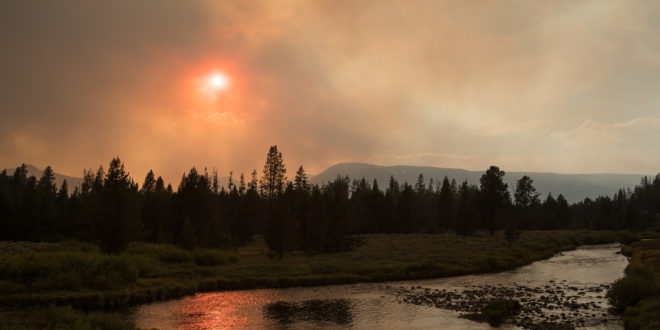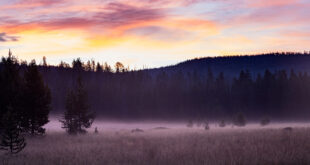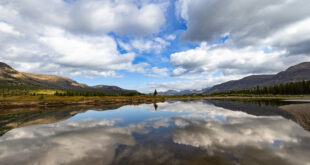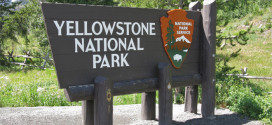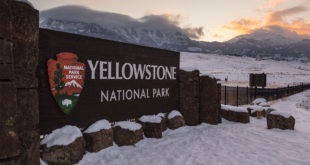Yellowstone officials say fire activity will be heightened for the rest of the week, due to “critical fire weather.”
According to a Yellowstone press release, the National Weather Service has issued a Red Flag Warning for Wednesday, Thursday and Friday in Yellowstone National Park, citing hot conditions, and increasing winds from “dry thunderstorms.”
In addition, visitors traveling east of Seven Mile Bridge along the Madison River should expect delays as traffic is reduced to one lane so crews can conduct burnout operations along the highway.
A community meeting has been scheduled Thursday, September 1 at 7:30 p.m. in the LDS Church (245 Faithful Street) in West Yellowstone, Montana.
Air quality warnings have been issued for the West Yellowstone area as well as around Lake Junction, Mammoth, and Gardiner—all downwind from the Fawn and Maple Fires. People with respiratory ailments or other sensitivities are urged to exercise caution, as smoke will linger through the afternoon and evening.
According to the release, Maple Fire has grown to 36,720 acres, with significant growth coming on the west and south sides of the fire. A pair of helicopters (one large Chinook and a smaller type 2) were called into the Cougar Creek area to drop water. A pair of “Fire Bosses” (water scooper airplanes) were dispatched in the Gneiss Creek area. Crews completed burnout operations southwest of Cougar Creek “to anchor into the recent Boundary Fire.”
Several fuels reduction and control line projects are underway around Maple Fire, including in the West Yellowstone and Duck Creek subdivisions, with officials evaluating control line opportunities on the western flank to avoid the Maple Fire spreading to U.S. 191.
Park visitors may see the Maple Fire at designated points along the West Entrance Road, from the Entrance to Madison Junction. Crews are also creating an anchor point along the southern flank to hold the fire at the Madison River.
Buffalo Fire, meanwhile, has grown to 4,442 acres. Crews say the area’s topography and today’s weather conditions will contribute to active fire growth. In addition, crews have been using weedwhackers to remove grass from round wooden bridges.
Fawn Fire has grown to 2,073 acres and continues to grow, with a large smoke column visible from Mammoth Hot Springs.
Central Fire, finally, has grown to 1,043 acres and has started to burn through a 1988 fire scar. Crews say parts of the Hayden Valley burnt by Central Fire are not smoldering or “carrying fire.” Growth has been limited on the southwest side of the fire. Nonetheless, Central Fire’s smoke column will be visible from the Hayden Valley, Fishing Bridge, and Mammoth.
The growth of Maple and Central Fires has prompted new trail and cabin closures, with the newest in bold. See the full list below:
• From the intersection of Highway 191 and Duck Creek Road #2523 (south side of the road), to Yellowstone National Park boundary, including the fishing access road at the end of Duck Creek road, south along YNP line to the north side of the Madison River bluff, then north along east side of Highway 191 back to the starting point, excluding the transfer station and road #6794
Campsites
• Slough Creek Campground
• WA1
• 1C1
• 1C2
• 1C4
• 1C5
• WB1
• WB3
• WB4
• WB6
• 2S1
• 2S2
• 2S3
• 2S4
• 2S6
• 2S7
• 2S8
Trails
• Mary Mountain Trail (including Mary Lake Patrol Cabin).
• Old Airport Road in West Yellowstone.
• Purple Mountain Trail.
• Riverside Trail.
• Cougar Creek Trail.
• Harlequin Lake Trail.
• Mount Holmes Trail.
• Winter Creek Trail.
• Grizzly Lake Trail.
• Trilobite Lake Trail.
• Slough Creek trail and “associated Day Use area.”
• Bliss Pass Trail between Slough Creek and Pebble Creek trail.
• Buffalo Fork Trail from the trailhead at Slough Creek to the Park Boundary.
• Gneiss Creek Trail from the Gneiss Creek Trailhead (WK7) to Seven Mile Bridge Trailhead (WK8).
• Bighorn Pass trail eastbound at the junction of the cut-off trail to the Fawn Pass trail.
• Bighorn Pass trail westbound at Bighorn Pass.
• Fawn Pass trail eastbound at the junction of the cut-off trail to the Big Horn Pass trail.
• Fawn Pass trail westbound at campsite 1F2.
Stage 1 Fire Restrictions are in place for Yellowstone National Park. All park entrances, roads, and visitor facilities, both NPS- and concessionaire-operated, are open at this time.
 Yellowstone Insider Your Complete Guide to America's First National Park
Yellowstone Insider Your Complete Guide to America's First National Park
